The 1923 Ford Model T stands as a testament to innovation, marking a pivotal moment in automotive history. This iconic vehicle, affectionately nicknamed the “Tin Lizzie,” revolutionized transportation and forever altered the landscape of American society. Born from the vision of Henry Ford, the Model T embodied the principles of mass production, affordability, and accessibility, making the dream of personal mobility a reality for millions.
The Model T’s impact extended far beyond the realm of transportation. Its influence on American culture was profound, contributing to the rise of suburbs, road networks, and a sense of individual freedom. This article delves into the fascinating story of the 1923 Ford Model T, exploring its design, engineering, production, marketing, and enduring legacy.
Design and Engineering
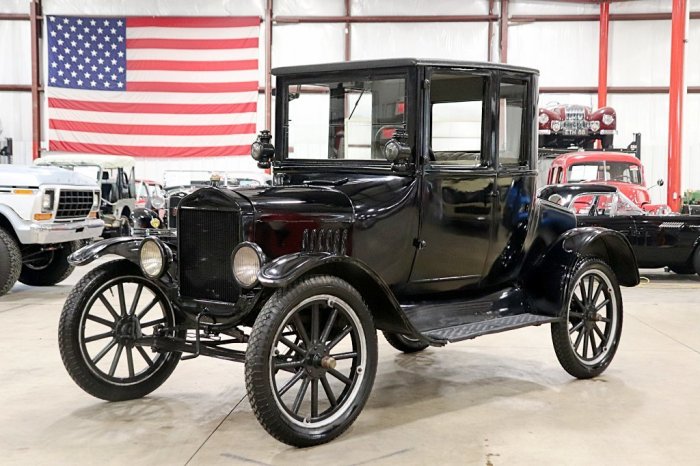
The Ford Model T, introduced in 1908, revolutionized the automotive industry with its innovative design and engineering principles. It was a car for the masses, affordable and accessible to a wide range of consumers. Its unique features and groundbreaking engineering made it a remarkable achievement for its time.
Unique Design Features
The Model T’s design was a departure from the complex and expensive automobiles of the era. It was characterized by its simplicity, affordability, and durability.
- Simplified Design:The Model T was designed with fewer parts and simpler mechanisms, making it easier to manufacture and maintain. This was achieved through standardization, where components were interchangeable, reducing the need for specialized parts and skilled labor.
- Mass Production:The Model T was the first car to be produced on a large scale using the assembly line method. This allowed for significant cost reductions and increased production volume, making it accessible to a broader market.
- Durable Construction:The Model T was built to last, with a sturdy chassis, robust engine, and durable components. Its simple design and robust construction made it suitable for a variety of terrains and driving conditions.
- Versatile Design:The Model T was designed to be versatile, with a variety of body styles available, including a touring car, roadster, pickup truck, and even a fire truck. This adaptability made it suitable for a wide range of applications.
Innovative Engineering Principles
The Model T’s design was based on several innovative engineering principles that contributed to its success.
- Lightweight Construction:The Model T’s use of a lightweight steel chassis and a simple, efficient engine contributed to its fuel efficiency and performance.
- Engine Design:The Model T’s four-cylinder engine was designed to be reliable and durable, with a simple design that made it easy to maintain. It was also known for its fuel efficiency, allowing it to travel up to 20 miles per gallon.
The 1923 Ford Model T, with its iconic black paint and simple design, revolutionized transportation. While the Model T was a symbol of early automotive innovation, Ford continued to push boundaries with its later models, like the 1940 Ford Deluxe , which introduced a more modern aesthetic and advanced features.
The Model T, despite its simplicity, laid the groundwork for the future of Ford and the automotive industry as a whole.
- Transaxle:The Model T’s transaxle, which combined the transmission and rear axle into one unit, was a significant innovation that simplified the drivetrain and improved efficiency.
- Planetary Transmission:The Model T’s planetary transmission allowed for a single lever to control both shifting and braking, simplifying the driving experience and making it more accessible to novice drivers.
Comparison to Contemporary Automobiles
Compared to contemporary automobiles, the Model T stood out for its simplicity and affordability. While other cars of the era were often complex and expensive, the Model T was designed for mass production and accessibility. Its innovative engineering principles, such as the assembly line method and the planetary transmission, allowed for significant cost reductions and increased efficiency, making it a game-changer in the automotive industry.
Production and Assembly: 1923 Ford Model T
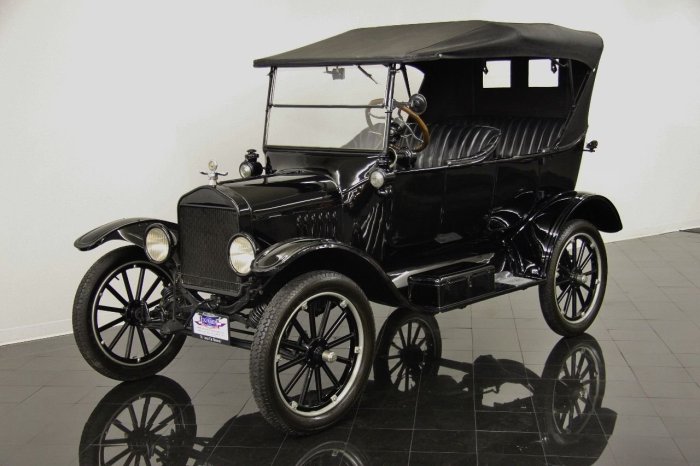
The Ford Model T’s success was not only due to its innovative design and engineering but also its revolutionary production methods. Henry Ford’s implementation of mass production techniques, particularly the assembly line, transformed the automobile industry and set the stage for modern manufacturing practices.
The Assembly Line
The assembly line played a pivotal role in the Model T’s production. Prior to Ford’s innovation, automobiles were assembled in a piecemeal fashion, with workers moving around the vehicle to complete their tasks. Ford’s assembly line system, inspired by meatpacking plants, standardized the process by breaking down the assembly into a series of specialized tasks.
Workers were stationed at specific points along the line, performing a single task repeatedly as the vehicle moved past them. This approach drastically reduced production time and costs, making the Model T more affordable for the average consumer.
The 1923 Ford Model T, known as the “Tin Lizzie,” revolutionized transportation with its affordability and ease of maintenance. While the Model T was a marvel of its time, later Ford models like the 1974 Ford 3/4 Ton Pickup offered greater power and versatility, catering to a broader range of needs.
The Model T, however, remains a symbol of American ingenuity and the transformative power of the automobile.
Mass Production Techniques
Ford’s mass production techniques went beyond the assembly line. He implemented several other innovations to streamline production and reduce costs:
- Standardization:Ford standardized parts, ensuring interchangeability and eliminating the need for custom-made components. This enabled him to produce large quantities of identical parts efficiently.
- Specialized Tools and Machinery:Ford invested in specialized tools and machinery designed for specific tasks, improving efficiency and worker productivity.
- Vertical Integration:Ford controlled the entire production process, from raw materials to finished vehicles, minimizing reliance on external suppliers and ensuring quality control.
- Scientific Management:Ford adopted Frederick Winslow Taylor’s principles of scientific management, which emphasized efficiency, time-and-motion studies, and worker training. This approach optimized the production process and improved worker performance.
Working Conditions and Labor Practices
Ford’s factories were known for their strict and regimented work environment. Workers were expected to maintain a high pace of production, and any deviation from the prescribed procedures was met with disciplinary action. The factories were often hot, noisy, and dangerous, with injuries a common occurrence.
- High Productivity Demands:Workers were expected to meet production quotas, which were often demanding and led to pressure and stress.
- Limited Breaks and Rest Periods:Breaks and rest periods were limited, and workers were closely monitored to ensure they remained productive.
- Safety Concerns:Safety was not a primary concern in Ford’s factories, and accidents were frequent. Workers often faced hazards like heavy machinery, sharp tools, and exposure to dust and fumes.
- Wage Incentives:Ford introduced a $5-a-day wage in 1914, which was significantly higher than the prevailing rate at the time. This move attracted a large workforce and helped reduce labor turnover. However, it also came with strict rules and surveillance to ensure workers maintained productivity.
Impact and Legacy
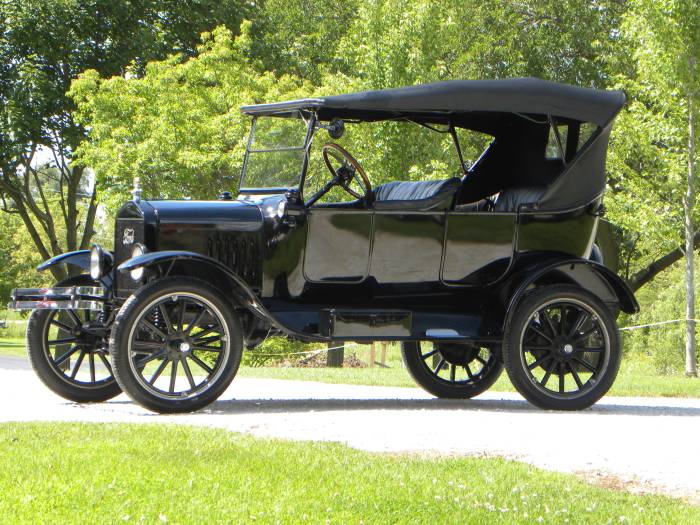
The Ford Model T’s impact extended far beyond its status as a mere vehicle. It revolutionized transportation, democratized car ownership, and profoundly shaped the automotive industry, leaving a lasting legacy that continues to influence the world today.
Revolutionizing Transportation
The Model T’s affordability and simplicity made it accessible to a vast segment of the population who had previously only dreamed of owning a car. Its mass production, coupled with its durability and ease of maintenance, made it a practical choice for everyday transportation.
The Model T’s widespread adoption led to a significant shift in how people lived, worked, and traveled. It enabled people to commute longer distances, explore new places, and connect with others more easily. The Model T’s influence on the development of roads and infrastructure was also significant.
The need for paved roads to accommodate the growing number of automobiles led to the expansion of the road network, which in turn facilitated further economic growth and social change.
Visual Representations
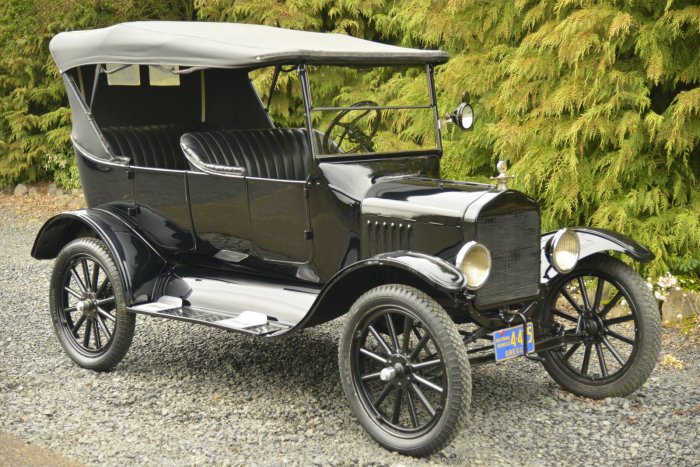
The 1923 Ford Model T, a revolutionary vehicle that forever changed the landscape of transportation, has left an indelible mark on history. Its iconic design and enduring legacy continue to fascinate and inspire, making it a subject of much visual documentation.
The 1923 Ford Model T, known as the “Tin Lizzie,” was a revolutionary car that democratized transportation. While the Model T was known for its simplicity and affordability, Ford continued to innovate, eventually introducing the sleek and stylish 1933 Ford Roadster.
This roadster, with its powerful V8 engine and streamlined design, marked a departure from the Model T’s utilitarian approach, showcasing Ford’s commitment to progress and evolving automotive trends. Though vastly different in style and performance, both vehicles remain iconic symbols of American ingenuity and the transformative power of the automobile.
Visual representations of the Model T offer a glimpse into its design, production, and societal impact. They capture the essence of this automobile, from its simple yet functional form to its role in shaping the modern world.
Visual Representations of the 1923 Ford Model T
| Image | Description | Source | Context |
|---|---|---|---|
| A black and white photograph showcasing a Model T driving down a dirt road, with a family of four inside. | This image captures the Model T’s early use as a family vehicle. The simple yet sturdy design of the car is evident, as is the dirt road, which was typical of roads in the early 20th century. | Ford Motor Company Archives | The image showcases the Model T’s role in transforming personal transportation, allowing families to travel beyond their immediate surroundings. |
| A detailed illustration of the Model T’s engine, highlighting its components and workings. | This illustration provides a technical perspective on the Model T’s design, showcasing its simple yet efficient engine. It details the various parts, such as the carburetor, crankshaft, and pistons, which contributed to the car’s reliability and affordability. | “The Model T: A History” by James P. Womack | The illustration provides insight into the engineering principles that made the Model T a success, demonstrating its innovative approach to automotive design. |
| A vintage advertisement featuring a Model T with the tagline “The Universal Car.” | This advertisement highlights the Model T’s versatility and appeal to a wide range of consumers. The tagline emphasizes its widespread adoption and its ability to meet the needs of different users. | “The Model T: The Car That Changed the World” by David L. Lewis | The advertisement reflects the Model T’s marketing strategy and its impact on consumer culture. |
| A photograph of a Model T assembly line, showing workers meticulously assembling the cars. | This image showcases the revolutionary assembly line production method pioneered by Henry Ford. The image captures the efficiency and standardization of the process, which enabled mass production of the Model T. | Ford Motor Company Archives | The photograph illustrates the Model T’s impact on industrial practices and its contribution to the rise of mass production in the 20th century. |
User Experiences
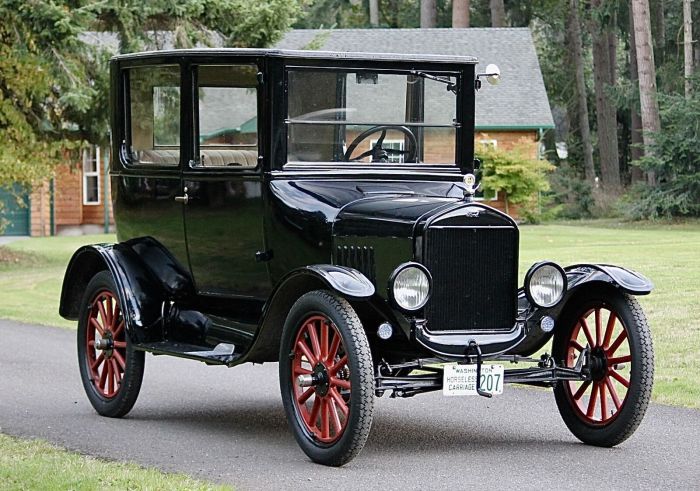
The Ford Model T, often referred to as the “Tin Lizzie,” revolutionized personal transportation and became a cultural icon. It played a significant role in transforming American society, and its impact extended far beyond the realm of automobiles. The Model T’s accessibility and affordability made it a household name, impacting the lives of countless individuals in profound ways.
Anecdotes and Historical Accounts, 1923 Ford Model T
The Model T’s accessibility and affordability allowed people from all walks of life to experience the freedom and convenience of personal transportation. This led to numerous anecdotes and historical accounts that capture the essence of the Model T’s impact on everyday life.
“My grandfather used to tell stories about driving his Model T to work every day. He said it was a real adventure, especially in the winter when the roads were covered in snow. He had to be careful not to get stuck, but he always managed to get where he needed to go.”
“My grandmother used to say that the Model T was the best thing that ever happened to her. She said it gave her the freedom to go places she never could have imagined before, like visiting her family in another state.”
“My great-aunt used to tell me stories about how her family used to go on long road trips in their Model T. They would pack up the car with all their belongings and drive for days, camping out along the way. She said it was a lot of fun, but it could also be very challenging.”
Challenges and Advantages of Owning and Driving a Model T
The Model T, while a groundbreaking invention, presented its own set of challenges and advantages for its owners. Understanding these aspects provides a comprehensive view of the Model T’s impact on everyday life.
Challenges
- Mechanical Complexity:The Model T, though simple by modern standards, required a level of mechanical understanding and maintenance skills that many drivers lacked. Owners often had to learn basic repair and troubleshooting techniques to keep their vehicles running smoothly.
- Limited Power and Speed:The Model T’s engine was relatively underpowered compared to modern vehicles, and its top speed was limited. This made long-distance travel time-consuming and could be frustrating in traffic or hilly terrain.
- Lack of Comfort and Safety Features:Early Model T’s lacked modern safety features such as seatbelts, airbags, and even windshield wipers. The lack of suspension and minimal sound insulation made for a bumpy and noisy ride.
Advantages
- Affordability:The Model T’s mass production and innovative assembly line techniques made it remarkably affordable, bringing personal transportation within reach of the average American family.
- Reliability and Durability:Despite its simplicity, the Model T was known for its reliability and durability. With proper maintenance, these vehicles could last for many years.
- Versatility:The Model T’s simple design and robust engine made it adaptable for various purposes. It could be used for transportation, farming, and even light industrial tasks.
Ending Remarks
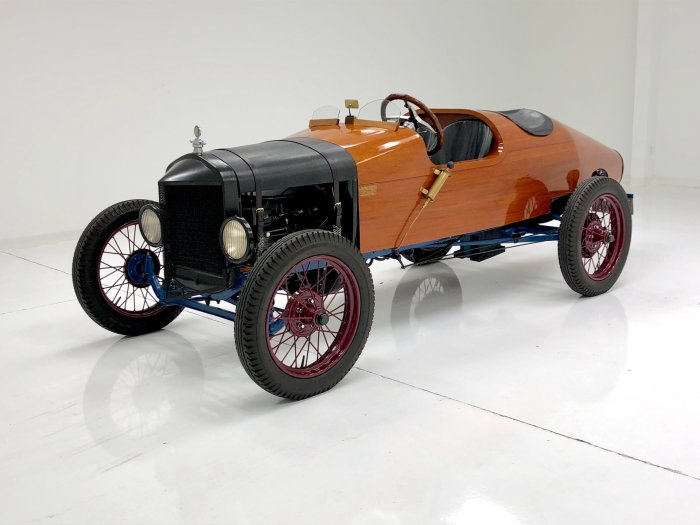
The 1923 Ford Model T’s legacy continues to inspire, reminding us of the power of innovation and its transformative impact on society. Its simplicity, affordability, and accessibility paved the way for the modern automobile industry, shaping our world in ways that continue to resonate today.
As we look back on the Model T’s journey, we gain valuable insights into the evolution of transportation, the ingenuity of human invention, and the enduring spirit of progress.